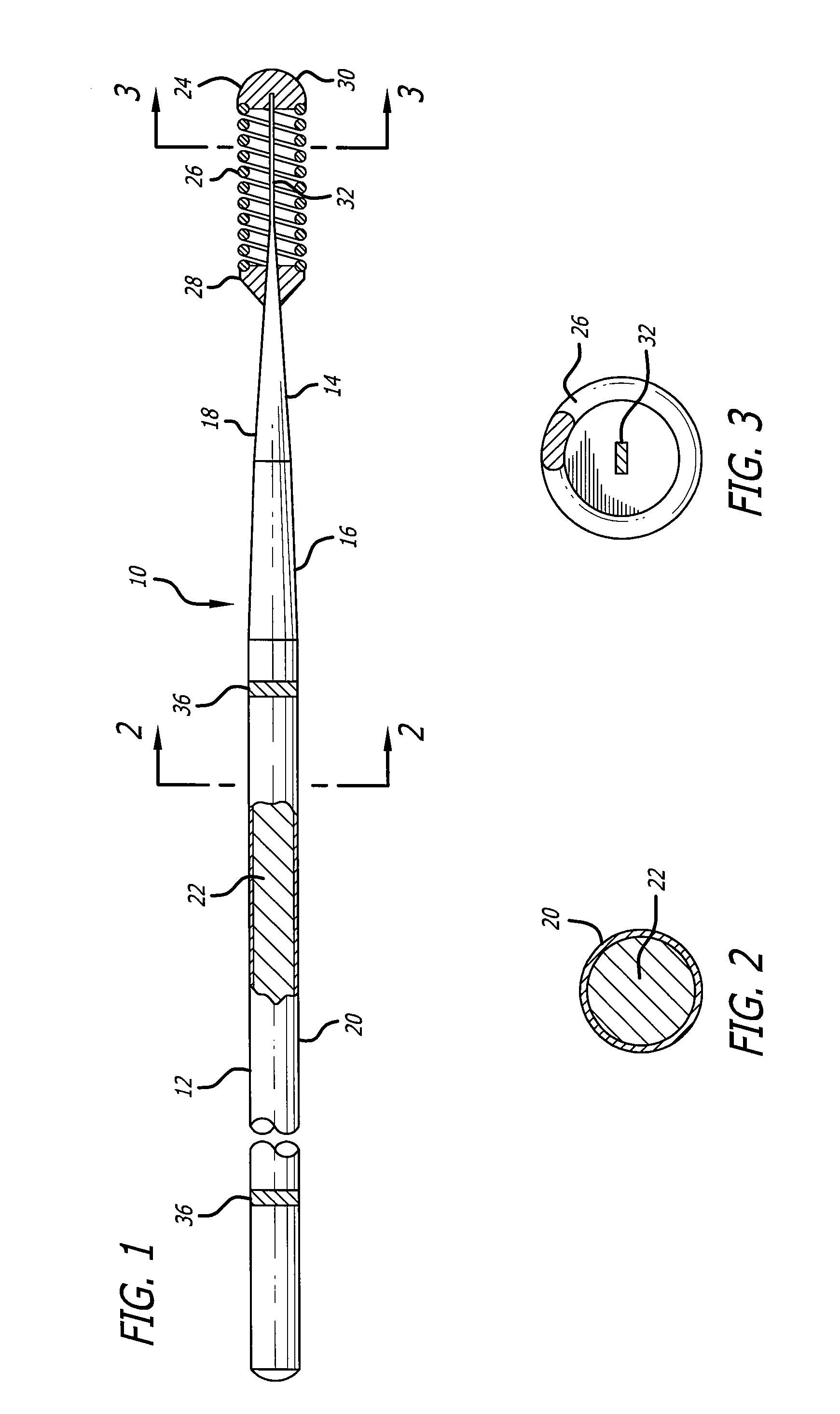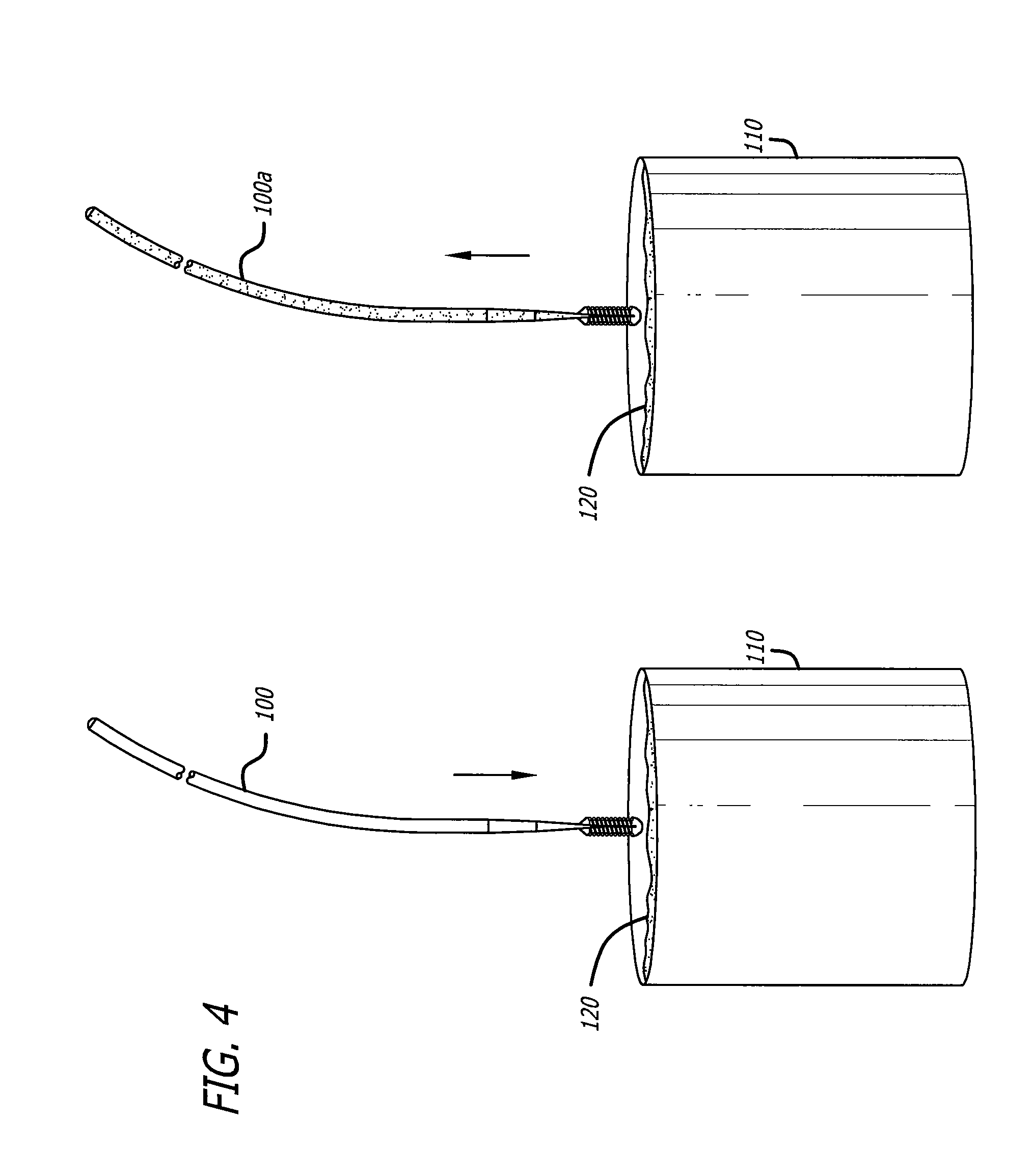Color coded guide wire and methods of making same
a technology of guide wires and color codes, applied in the direction of guide wires, diagnostic recording/measuring, catheters, etc., can solve the problems of altering the way light is reflected by the surface, and achieve the effects of enhancing lubricity, enhancing lubricity, and reducing the amount of reflected ligh
- Summary
- Abstract
- Description
- Claims
- Application Information
AI Technical Summary
Benefits of technology
Problems solved by technology
Method used
Image
Examples
Embodiment Construction
[0026]The present invention is directed to an elongated intracorporeal device such as a guide wire having a color coding system. The color coding distinguishes similar guide wires for use in procedures where multiple guide wires are used as well as helping to select an appropriate guide wire for a single guide wire procedure. The color coding can also be used for brand recognition to distinguish one manufacturer from another. In various embodiments, the color coding can be applied to the metal core, either at a distal or proximal end, or to a flexible outer body portion of the guide wire. Various methods for implementing the color coding of the guide wires are set forth below, and the description of the color coding methods are intended to be illustrative but not limiting.
[0027]FIG. 1 is a side elevational view partially in section of one embodiment of the present invention guide wire 10. The guide wire 10 includes an elongated core having a proximal core section 12 and a distal cor...
PUM
| Property | Measurement | Unit |
|---|---|---|
| diameter | aaaaa | aaaaa |
| length | aaaaa | aaaaa |
| thickness | aaaaa | aaaaa |
Abstract
Description
Claims
Application Information
 Login to View More
Login to View More - R&D
- Intellectual Property
- Life Sciences
- Materials
- Tech Scout
- Unparalleled Data Quality
- Higher Quality Content
- 60% Fewer Hallucinations
Browse by: Latest US Patents, China's latest patents, Technical Efficacy Thesaurus, Application Domain, Technology Topic, Popular Technical Reports.
© 2025 PatSnap. All rights reserved.Legal|Privacy policy|Modern Slavery Act Transparency Statement|Sitemap|About US| Contact US: help@patsnap.com



